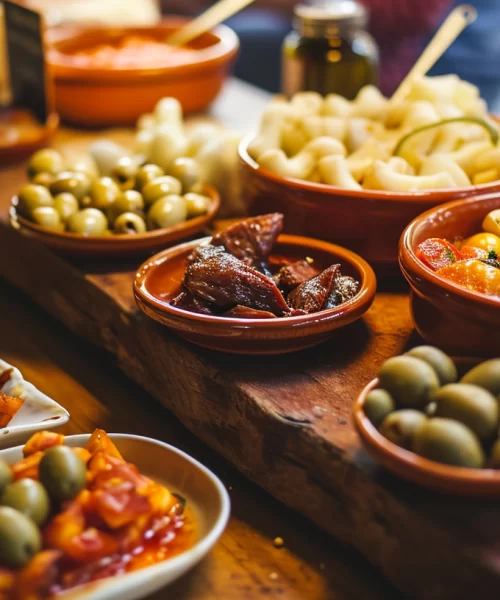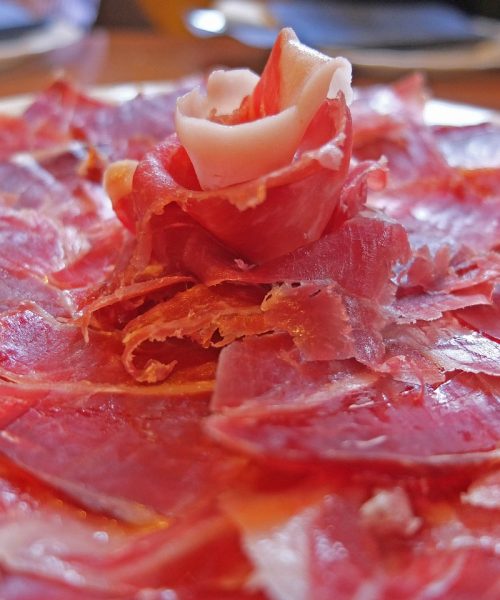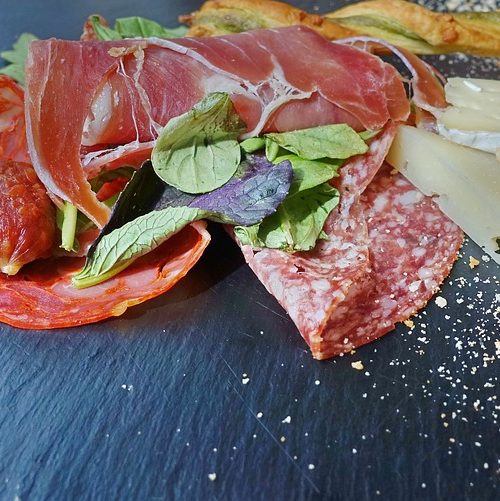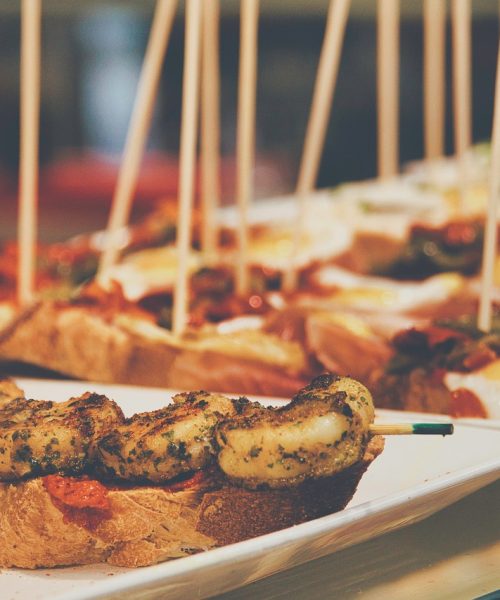Spanish cuisine varies by region and season, but there are a number of ingredients – including spices and herbs – that keep cropping up and are worth having on hand when planning, frequently to cook Spanish recipes.
They also overlap to a large extent with the main ingredients in the pantry of Portuguese cuisine, so that both cooking styles can be combined seamlessly: both cuisines are characterized by a high proportion of seafood, simple preparations and imaginative variations of the staple foods.
1. Manzanilla Olives
Olives are served daily in almost every bar in Spain and are a common ingredient in many recipes. Our favorite table olives are Manzanilla olives. They are meaty, flavorful and crunchy and can be marinated in a variety of ways. Manzanilla olives are a must for any appetizer or tapas. Try the typical olives stuffed with anchovies or marinated with spices such as garlic and paprika. You can also use them to make delicious Gildas.
2. Bomba Rice
Rice is the key ingredient in dishes such as paellas, black rice or arroz caldoso (rice in broth). And there is no better rice for these recipes than bomba rice.
Bomba rice is a short-grain, round rice from Valencia. This rice is able to hold up to twice the stock of other types of rice without breaking down, resulting in a much tastier rice.
3. Sardines and sardinillas
Canned sardines and sardinillas produced on the Spanish and Portuguese coasts are an important economic product for many families.
These canned foods are a very versatile foodstuff: They can be used to prepare fresh dishes such as salads, toast or tapas, and can also be eaten straight from the can. They are made artisanally from sardines selected at the optimum state of ripeness and enriched with other 100% healthy products such as olive oil, lemon, tomato or chilli.
4. pimentón de la Vera Paprika
Paprika de la Vera, made from dried, smoked sweet or hot red peppers that are ground to a fine powder, is commonly used in Spanish cuisine.
In every Spanish pantry you can find Paprika de la Vera in its sweet or savory variant, because it is used to flavor and color famous dishes such as paella, pil pil prawns or stews of all kinds.
5. Serrano ham
There are many types of Spanish ham, depending on the breed of pig (Duroc or Iberian ham), the areas of production and the curing period. But if there’s one ham that Spanish families eat almost every day, it’s Serrano ham.
Serrano ham is the Spanish ham with the best value for money and is used both in tapas and in tapas or cold cuts together with chorizo, salchichón or lomo, as well as in other typical recipes such as huevos rotos, flamenquín from Cordoba or cachopo from Asturias.
6. Vegetable sofrito
Sofrito is one of the most important ingredients in Spanish cuisine. Sofrito is a kind of vegetable ratatouille used in many recipes: paellas and rice dishes of all kinds, or stews such as fabada asturiana, cocido madrileño and lentils with chorizo.
7. Manchego cheese
Spain is rich in a variety of regional cheeses. From fresh and soft to mature and hard cheese, from cow’s to goat’s and sheep’s cheese. Sometimes it is used as an ingredient, but the main role of cheese in Spain is that it is sliced and eaten as such or used to make tapas.
And if it is a popular cheese in Spain there is, it’s the manchego cheese. It is made from pure sheep’s milk and has an intense but elegant taste that is almost addictive. The intensity of the flavor depends on the aging period, and there are semi-cured, cured and cured Manchego cheeses.
8. alioli, salsa brava and romesco sauce
The Spaniards love to eat with bread for no other reason than the wide variety of sauces in their gastronomy and there is nothing better than a good white bread with a delicious sauce.
If we had to pick just a few Spanish sauces to have in your pantry, they would be aioli, salsa brava and romesco sauce. All three can be used as an accompaniment to all kinds of meat, vegetables and fish, bringing joy and flavor to all kinds of recipes.
9. Cantabrian anchovies
The Cantabrian anchovies are known all over the world. They are made in northern Spain from anchovies caught in the Atlantic at optimum maturity and cleaned, salted and filleted by hand.
They are semi-preserved, which means they have a shorter expiry date than other canned fish and must be refrigerated.
It is difficult to find a more umamy flavor than that of Cantabrian anchovies and they are usually eaten alone, simply with a drizzle of extra virgin olive oil or as an ingredient in more elaborate tapas and Pintxos.





